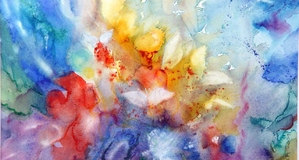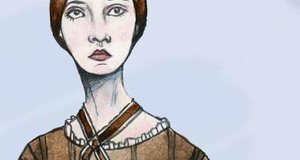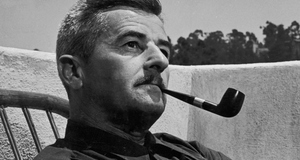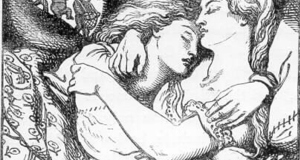The Red Wheelbarrow: Dissecting the Minimal Masterpiece
By
2011, Vol. 3 No. 06 | pg. 1/1
KEYWORDS:
The Red WheelbarrowWilliam Carlos Williamsso much depends William Carlos Williams’s “The Red Wheelbarrow” contains four two line stanzas in which the first line contains three words and the second contains one word with two syllables; it is also an awesome, awesome poem. With four stanzas the poem describes in humongous detail not just a wheelbarrow but a whole scene, a moment stuck in time. Williams’s form in the poem accomplishes this by using the strange break points to emphasize certain words and letting the words and their rhythms work for themselves. The first stanza, “so much depends/ upon” illustrates this by making the reader’s eye and mind just hang off the word ‘depends.’ The gravity of the situation draws the reader in despite not even knowing (unless one infers from the title) what so much depends on. The verb ‘depends’ throws the reader off the cliff of SO MUCH, and the speaker just offers us the shaky root of upon with which we are expected to climb back up to reality. But of course we do so on Williams’s terms. Agitated, the reader then looks down to see for what he or she has been thrown into oblivion: a red wheelbarrow. A red wheelbarrow? No, “a red wheel/ barrow.” The abrupt disjuncture of the phrase deconstructs the word, forcing the mind to reconsider a kindergarten-level word such as wheelbarrow and give it more importance.1 To this point the reader only knows that there is a red wheelbarrow that so much is depending upon, and yet there is an importance attached to the wheelbarrow through Williams’s form that would otherwise be difficult to explain.The third stanza finally gives us the inklings of the speaker’s point: the wheelbarrow is “glazed with rain/ water.” The word ‘glazed’ implies something hard, shiny, and new, and the word rain furthers the implication to the inference that it has rained recently and a new wheelbarrow has been lightly decorated with raindrops—if it was old and rusted, the rain would have given it a dank and crimson appearance, but not only is the wheelbarrow shiny and new, there is some kind of light illuminating it. The brevity of the phrase ‘glazed with rain’ not only highlights the word glazed, which does a huge amount of work for the speaker, but it also introduces the intralinear rhyme that would be driven down by the weight of the word ‘rainwater.’ The brevity and levity of the poem’s form manifests itself in the levity of the created image. The final stanza completes the picture: “beside the white/ chickens” implies a rural setting, the presence of life, and finally the encapsulation of the image inside itself. The first line contains the rhyme and the levity of the situation. The words themselves complete the physical idea: the chickens which hid during the storm return upon seeing the light which illuminates the wheelbarrow. Once terrified by the forces of nature, they find that such phenomenon only accentuate the shimmering beauty of their world. It becomes clear that the most important part of the poem is not even mentioned: the light that returns to the land and brings harmony back to the human and natural world. But more important than the literal meaning of this stanza is the fact that it embodies its own message: the poem begins with two strong beats and two iams, and so it ends. While the words of the middle stanzas are turbulently broken through the form of the poem, the first and last stanza stand as coherent and purposeful phrases. The poem, one sentence about a red wheel barrow, has delivered the theme that life, though turbulent, deceptively complex, and at times scary, resolves to purpose and beauty. Through its form the poem becomes itself: a beacon of new green light breaking through storm clouds and unleashing the bombastic beauty of a new red wheelbarrow and some chickens. 1.) The choice of the article ‘a’ instead of ‘the’ furthers the reader’s curiousity—the sound is less abrasive, but it is also the indefinite article, meaning that the image is being left to the reader’s imagination. Williams places emphasis on this stanza by making it the only one to begin with a vowel; moreover, it alone is dominated by soft vowel sounds. Suggested Reading from Inquiries Journal
Inquiries Journal provides undergraduate and graduate students around the world a platform for the wide dissemination of academic work over a range of core disciplines. Representing the work of students from hundreds of institutions around the globe, Inquiries Journal's large database of academic articles is completely free. Learn more | Blog | Submit Latest in Literature |


















